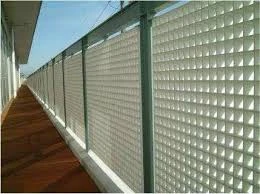
-
 Afrikaans
Afrikaans -
 Albanian
Albanian -
 Amharic
Amharic -
 Arabic
Arabic -
 Armenian
Armenian -
 Azerbaijani
Azerbaijani -
 Basque
Basque -
 Belarusian
Belarusian -
 Bengali
Bengali -
 Bosnian
Bosnian -
 Bulgarian
Bulgarian -
 Catalan
Catalan -
 Cebuano
Cebuano -
 China
China -
 China (Taiwan)
China (Taiwan) -
 Corsican
Corsican -
 Croatian
Croatian -
 Czech
Czech -
 Danish
Danish -
 Dutch
Dutch -
 English
English -
 Esperanto
Esperanto -
 Estonian
Estonian -
 Finnish
Finnish -
 French
French -
 Frisian
Frisian -
 Galician
Galician -
 Georgian
Georgian -
 German
German -
 Greek
Greek -
 Gujarati
Gujarati -
 Haitian Creole
Haitian Creole -
 hausa
hausa -
 hawaiian
hawaiian -
 Hebrew
Hebrew -
 Hindi
Hindi -
 Miao
Miao -
 Hungarian
Hungarian -
 Icelandic
Icelandic -
 igbo
igbo -
 Indonesian
Indonesian -
 irish
irish -
 Italian
Italian -
 Japanese
Japanese -
 Javanese
Javanese -
 Kannada
Kannada -
 kazakh
kazakh -
 Khmer
Khmer -
 Rwandese
Rwandese -
 Korean
Korean -
 Kurdish
Kurdish -
 Kyrgyz
Kyrgyz -
 Lao
Lao -
 Latin
Latin -
 Latvian
Latvian -
 Lithuanian
Lithuanian -
 Luxembourgish
Luxembourgish -
 Macedonian
Macedonian -
 Malgashi
Malgashi -
 Malay
Malay -
 Malayalam
Malayalam -
 Maltese
Maltese -
 Maori
Maori -
 Marathi
Marathi -
 Mongolian
Mongolian -
 Myanmar
Myanmar -
 Nepali
Nepali -
 Norwegian
Norwegian -
 Norwegian
Norwegian -
 Occitan
Occitan -
 Pashto
Pashto -
 Persian
Persian -
 Polish
Polish -
 Portuguese
Portuguese -
 Punjabi
Punjabi -
 Romanian
Romanian -
 Russian
Russian -
 Samoan
Samoan -
 Scottish Gaelic
Scottish Gaelic -
 Serbian
Serbian -
 Sesotho
Sesotho -
 Shona
Shona -
 Sindhi
Sindhi -
 Sinhala
Sinhala -
 Slovak
Slovak -
 Slovenian
Slovenian -
 Somali
Somali -
 Spanish
Spanish -
 Sundanese
Sundanese -
 Swahili
Swahili -
 Swedish
Swedish -
 Tagalog
Tagalog -
 Tajik
Tajik -
 Tamil
Tamil -
 Tatar
Tatar -
 Telugu
Telugu -
 Thai
Thai -
 Turkish
Turkish -
 Turkmen
Turkmen -
 Ukrainian
Ukrainian -
 Urdu
Urdu -
 Uighur
Uighur -
 Uzbek
Uzbek -
 Vietnamese
Vietnamese -
 Welsh
Welsh -
 Bantu
Bantu -
 Yiddish
Yiddish -
 Yoruba
Yoruba -
 Zulu
Zulu
frp pipes and fittings utilized in ship construction
The Role of FRP Pipes and Fittings in Ship Construction
In recent years, the maritime industry has seen an increasing trend towards the use of Fiber Reinforced Plastic (FRP) pipes and fittings in ship construction. This shift is largely driven by the unique properties of FRP materials, which offer several advantages over traditional metal components. In this article, we will explore the characteristics, benefits, applications, and challenges associated with the use of FRP pipes and fittings in shipbuilding.
Characteristics of FRP Materials
FRP is a composite material made from a polymer matrix reinforced with fibers, typically glass or carbon. This combination results in a lightweight yet strong material that exhibits corrosion resistance and durability. The non-metallic nature of FRP also provides excellent resistance to a variety of chemicals, which is particularly important in marine environments where exposure to saltwater and other corrosive agents is common.
One of the most notable characteristics of FRP is its low thermal conductivity, which minimizes heat loss and enhances insulation. Additionally, being lightweight, FRP reduces the overall weight of the vessel, allowing for better fuel efficiency and increased carrying capacity.
Benefits of FRP Pipes and Fittings
The adoption of FRP pipes and fittings in ship construction offers numerous benefits. First and foremost, the corrosion resistance inherent in FRP reduces maintenance costs and prolongs the lifespan of the components. Unlike traditional materials like steel or iron, which can corrode over time due to exposure to moisture and salt, FRP remains largely unaffected, ensuring longevity and reliability.
Furthermore, the lightweight nature of FRP allows for easier handling and installation during construction. This not only speeds up the construction process but also reduces labor costs. The design flexibility offered by FRP enables manufacturers to create custom shapes and sizes to fit specific applications, which is especially advantageous in complex ship designs.
Additionally, FRP's thermal insulation properties contribute to energy efficiency onboard vessels
. By minimizing heat transfer, FRP pipes help maintain optimal temperatures in critical systems, reducing the need for additional heating or cooling systems.frp pipes and fittings utilized in ship construction

Applications in Ship Construction
FRP pipes and fittings are increasingly utilized in various applications within ships. Common uses include piping systems for cooling water, wastewater management, fuel lines, and ballast systems. Given their chemical resistance, FRP components are particularly well-suited for transporting corrosive fluids, ensuring safety and efficiency.
Moreover, the lightweight properties of FRP are advantageous in offshore vessels, where weight reduction is crucial for performance. These materials are also used in deck components, such as gratings and handrails, providing durable and safe options for shipbuilders.
Challenges and Considerations
Despite the many advantages, the use of FRP in ship construction is not without its challenges. One major concern is the initial cost of FRP materials, which can be higher than traditional options. Additionally, the manufacturing process requires specialized techniques and skills, which may not be readily available in all shipyards.
Moreover, while FRP is durable, it can be sensitive to certain environmental conditions and may require specific care to maintain its integrity. Shipbuilders must weigh these considerations against the long-term benefits of incorporating FRP components into their designs.
Conclusion
In conclusion, FRP pipes and fittings represent a promising advancement in ship construction, offering a combination of strength, durability, and corrosion resistance that traditional materials struggle to match. As the maritime industry continues to evolve, the incorporation of FRP technology is likely to increase, driving innovations and improvements in vessel design and performance.









